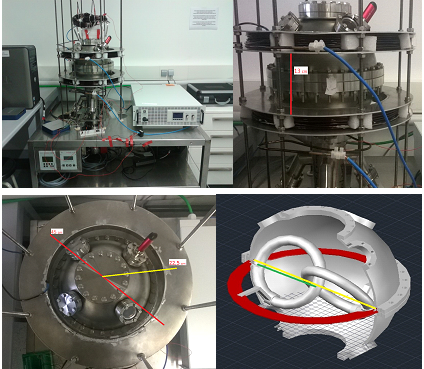Control Applied to Fusion

In the last years, there has been a considerable international effort to develop a clean technology based on magnetic confinement fusion energy, as it is the case of the ITER (International Thermonuclear Experimental Reactor). The process involves a nuclear reaction in which two cores of light atoms, usually hydrogen and its isotopes come together to form a heavier core. This reaction releases a great amount of energy in form of gamma rays and kinetic energy of the emitted particles that allows matter entering in state of plasma. The final objective is to reproduce the process taking place in the stars, including the Sun, that constantly undergo nuclear fusion reactions. This represents a number of scientific and technical challenges. In particular, the automatic control composes one of the areas of interest regarding the development of a clean fusion technology, since one of the main limiting phenomena is the premature reaction decay due to instabilities of the plasma.
Nowadays there exist two main magnetic fusion devices topologies: tokamaks and stellarators. On one hand tokamak reactors confine the plasma particles in a toroidal region using magnetic fields. These particles are held in small gyrating orbits by the magnetic field. The principal magnetic field is usually toroidal and the confinement of the plasma is mainly achieved through the poloidal magnetic field. The field lines around the plasma current are combined with the toroidal field to produce helical field lines, which wrap around the torus in both directions. On the other hand, stellarators consist basically of a helically symmetric system bent into a torus with a large axisymmetric toroidal field, a moderately sized helical field and a small axisymmetric vertical field, all of them created by electromagnetic coils. In this way, the magnetic confinement in stellarators is fully achieved by the coils, so that no plasma current is needed to confine -although ohmic, non-inductive and bootstrap currents may also be present-. This fact makes stellarators a great alternative to tokamaks, with relevant progresses in the study of the physics of magnetically confined plasmas on these devices in the last years. The UPV / EHU Fusion Reactor has been build based on to the Columbia Non-neutral Torus. This control oriented reactor loacated in the ACG laboratory, facilitates different experiemental control implementations in support of this research line.
